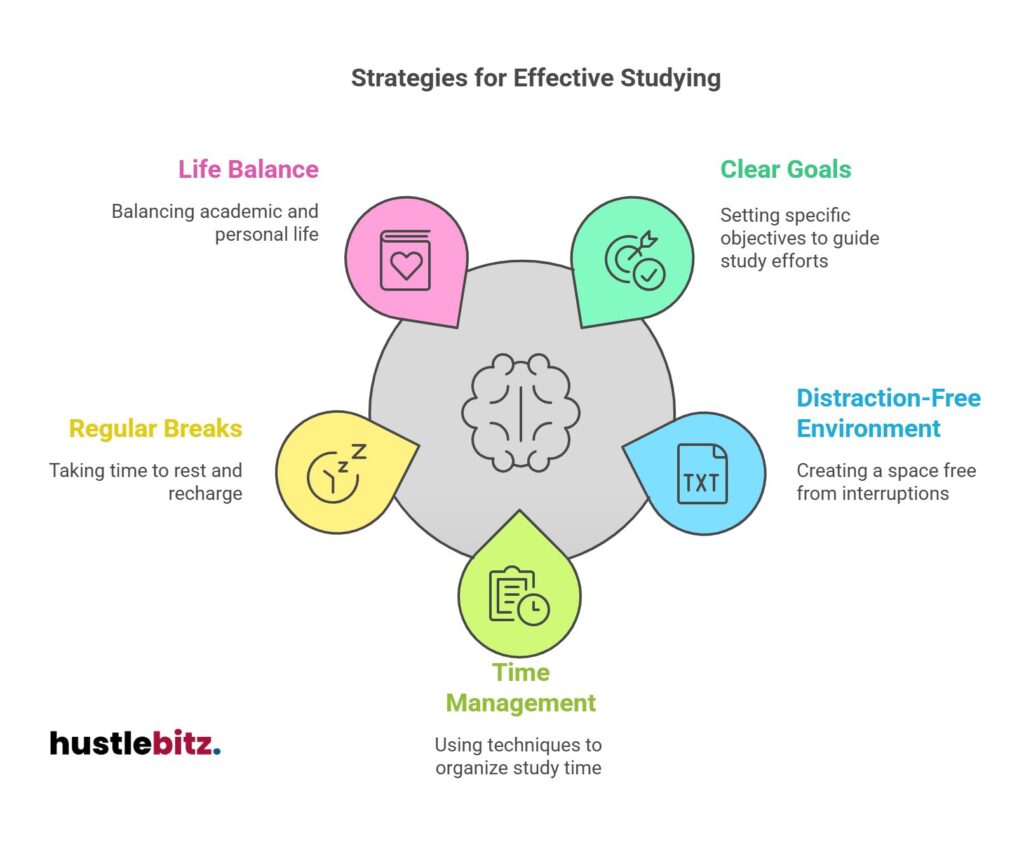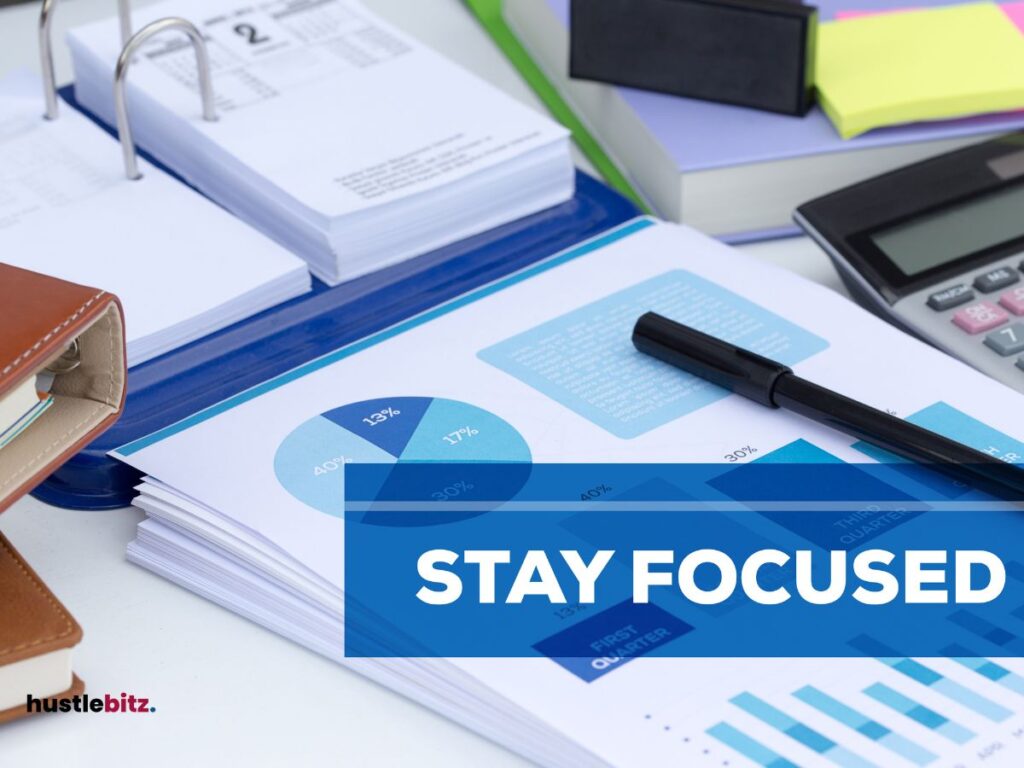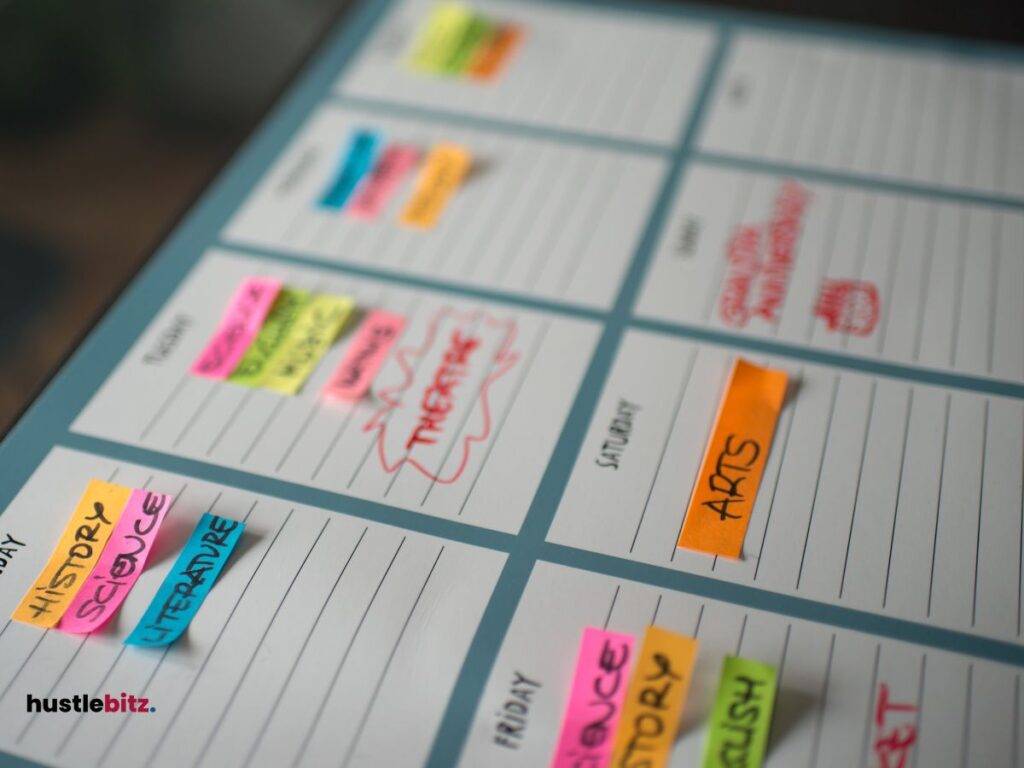To boost productivity, students should set clear, achievable goals and create a structured study schedule. Utilizing techniques like the Pomodoro Technique can enhance focus by promoting work intervals and breaks. It’s vital to minimize distractions by maintaining an organized study space and limiting smartphone use. Regular breaks are essential for mental recharge and creativity. Effective note-taking strategies, such as the Cornell Method, improve information retention. Prioritizing self-care and maintaining a balance between academic and personal life can prevent burnout. These strategies are just the beginning; more insights can help elevate your academic performance further.
Key Takeaways
- Set clear, achievable goals to provide direction and motivation for your study sessions.
- Create a distraction-free study environment by decluttering and managing smartphone usage effectively.
- Utilize time management techniques like the Pomodoro Technique to maintain focus and productivity.
- Regularly take breaks to recharge mentally and physically, enhancing overall learning retention.
- Maintain a balance between academic and personal life by prioritizing self-care and nurturing social connections.

Importance of Productivity in Academic Success
A high level of productivity is crucial for students, as it directly influences their academic success and overall ability to manage coursework effectively. The connection between productivity and academic achievement is well-established; students who cultivate strong productivity habits often perform better in their studies. This is largely due to the effective goal setting and learning strategies they employ, allowing them to allocate their time and resources efficiently.
Creating an optimal study environment is another essential factor. A well-organized and distraction-free space enhances focus and promotes better retention of information. Furthermore, developing self-discipline skills empowers students to adhere to their schedules and resist procrastination, which can derail academic progress.
Motivation techniques play a pivotal role in sustaining productivity. By understanding their personal motivators and aligning their study practices with these drivers, students can maintain their enthusiasm for learning. Additionally, performance metrics can be beneficial; tracking progress helps students identify areas for improvement and celebrate milestones, which fosters a positive feedback loop.
Effective stress management is equally important, as high levels of stress can hinder productivity. Students must learn to balance their workload and implement strategies to mitigate stress, ensuring they remain focused and capable of achieving their academic goals.
Stay Focused and Motivated

Maintaining focus and motivation is essential for students to navigate their academic responsibilities effectively and achieve their goals. A well-structured approach can enhance productivity and maintain a positive mindset throughout the learning journey. Here are several strategies that can aid students in staying focused and motivated:
- Goal Setting: Establish clear, achievable objectives to give direction and purpose to your study sessions.
- Study Environment: Create a conducive study space that minimizes distractions and promotes concentration.
- Motivation Strategies: Employ techniques such as visualization to imagine achieving your goals, reinforcing the drive to succeed.
- Accountability Partners: Collaborate with peers to hold each other accountable for academic commitments, fostering a sense of responsibility.
- Reward System: Implement a rewards mechanism for completing tasks, which can enhance motivation and provide positive reinforcement.
In addition, integrating self-discipline practices into your routine can promote consistency. Regularly using affirmations can boost self-esteem and reinforce a positive mindset.
Progress tracking, whether through journaling or digital tools, can provide tangible evidence of achievements, further motivating students to persist.
Time Management Techniques Every Student Should Master
Effective time management techniques can significantly enhance a student’s ability to stay focused and motivated while navigating their academic responsibilities. Mastering these techniques can lead to improved productivity and reduced stress.
One popular method is the Pomodoro Technique, which involves working in focused intervals followed by short breaks, enhancing concentration and preventing burnout. Time Blocking also proves effective, allowing students to allocate specific periods for different tasks, thus creating a structured approach to their day.
Using a Prioritization Matrix or the Eisenhower Box helps students categorize tasks based on urgency and importance, ensuring they focus on what truly matters. Goal Setting is crucial, as it provides clear objectives and helps in tracking progress.
Incorporating Daily Reviews into one’s routine allows students to assess their achievements and adjust their plans as necessary. Coupled with Weekly Planning, this practice enables better foresight and organization for the week ahead.
Task Batching is another strategy that can streamline productivity by grouping similar tasks together, minimizing distractions that arise from task-switching. Furthermore, effective Deadline Management is vital; students should establish timelines for assignments to avoid last-minute stress.
Lastly, Reflection Practices encourage students to evaluate their time management strategies, identifying areas for improvement. By mastering these techniques, students can cultivate a productive academic environment that fosters success and personal growth.
Creating a Study Schedule

Developing a well-structured study schedule is essential for students seeking to optimize their learning and manage their time efficiently. A thoughtful approach to scheduling can enhance productivity and ensure that important tasks are completed on time. By implementing a study schedule that includes study blocks, students can allocate specific periods for focused learning, making it easier to retain information.
To create an effective study schedule, consider the following key components:
- Goal Setting: Define clear academic goals to guide your study sessions.
- Flexible Scheduling: Allow for adjustments in your timetable to accommodate unexpected events or changes in workload.
- Daily Planners: Utilize daily planners to organize tasks and visualize your day-to-day commitments.
- Weekly Reviews: Regularly review your progress to make necessary adjustments and stay on track.
- Accountability Partners: Collaborate with peers to create a support system, ensuring that both parties remain committed to their schedules.
Incorporating time allocation and subject prioritization into your study routine is vital. Assign more time to subjects that require additional focus, and set deadline reminders to help you stay aware of upcoming assessments.
Additionally, tracking adjustments made to your schedule will provide insights into what works best for your learning style. By establishing a structured yet adaptable study schedule, students can effectively navigate their academic responsibilities while fostering a deeper understanding of the material.
Minimizing Distractions

Minimizing distractions is crucial for students aiming to enhance their focus and maximize productivity during study sessions. A well-structured study environment plays a significant role in achieving this goal.
Students should consider decluttering their space to create a more conducive atmosphere for learning. Removing unnecessary items can lead to less visual distraction, allowing for clearer thinking.
Another key aspect is managing smartphone usage. Social media can be a major source of distraction; therefore, implementing a digital detox during study hours is advisable. Setting boundaries regarding device usage helps in creating focused routines, enabling students to prioritize tasks effectively.
Moreover, utilizing noise control strategies, such as noise-canceling headphones or quiet study areas, can further reduce interruptions from the surrounding environment.
Incorporating mindfulness practices into daily routines can also significantly mitigate distractions. Techniques such as meditation or deep-breathing exercises can enhance concentration and promote a state of calmness, making it easier to focus on academic tasks.
Additionally, students should recognize the importance of scheduling specific times for social media interaction, thereby allowing them to engage without compromising their study time.
Ultimately, by employing these strategies—decluttering space, managing smartphone usage, setting boundaries, and practicing mindfulness—students can create an environment that fosters concentration.
This proactive approach toward minimizing distractions will not only enhance productivity but also contribute to a more fulfilling academic experience.
The Power of Breaks: Why Regular Downtime Boosts Productivity

Regular breaks are essential for maintaining high levels of productivity, as they allow the brain to rest and recharge, ultimately enhancing focus and efficiency during study sessions. The concept of productivity cycles emphasizes the importance of break frequency; by incorporating regular intervals of downtime, students can experience significant benefits that contribute to overall success.
Engaging in breaks can lead to a variety of positive outcomes:
- Mental recharge: Stepping away from study materials helps clear the mind, allowing for better retention and understanding of information.
- Creativity boost: Downtime often leads to fresh ideas and innovative thinking, enabling students to approach problems from different angles.
- Stress reduction: Regular breaks can alleviate feelings of overwhelm, fostering a more conducive learning environment.
- Physical movement: Short breaks encourage students to stretch or take a brief walk, promoting better circulation and overall brain health.
- Mindfulness practices: Incorporating mindfulness during breaks can enhance focus and lead to a motivation revival, making study sessions more effective.
Understanding the time benefits of breaks can be transformative. By allowing for moments of reflection and relaxation, students can refresh their minds, ultimately leading to enhanced productivity. The key lies in recognizing that breaks are not a waste of time; instead, they are an integral part of the learning process, ensuring sustained motivation and improved performance throughout the academic journey.
Effective Note-Taking Strategies for Better Retention

Effective note-taking strategies can significantly enhance a student’s ability to retain and comprehend information, fostering a deeper engagement with the material.
Employing techniques such as the Cornell method can structure notes effectively, allowing for organization and easy review. This method divides the page into sections for cues, notes, and summaries, promoting active recall during study sessions.
Incorporating visual aids, such as diagrams and charts, can further enhance understanding by providing a visual representation of complex concepts. Mind mapping is another powerful strategy, facilitating connections between ideas and enabling students to visualize the relationships within the material.
Digital notes offer flexibility and ease of access, allowing students to incorporate multimedia elements. Recording audio notes can also be beneficial, catering to auditory learners and enabling the review of lectures at any time.
To improve retention, students can utilize summarization techniques, distilling information into concise, digestible formats. Employing color coding can aid in categorizing information, enhancing both organization and memory recall.
Additionally, integrating a flashcard strategy with spaced repetition ensures that students revisit material at intervals, reinforcing learning and preventing forgetting.
Balancing Academic and Personal Life

Achieving a harmonious balance between academic responsibilities and personal life is crucial for students to maintain overall well-being and enhance their productivity. Striking this balance allows students to cultivate their mental health while pursuing personal goals.
To achieve this equilibrium, consider integrating the following strategies into your routine:
- Prioritize self-care practices: Allocate time for activities that rejuvenate your mind and body, such as meditation or reading.
- Engage in exercise routines: Regular physical activity can boost energy levels and improve focus, helping to combat stress.
- Nurture social connections: Invest time in relationships with friends and family, as these interactions provide essential support and encouragement.
- Pursue academic hobbies and creative outlets: Engaging in activities related to your interests can enhance your skills while providing a much-needed break from studies.
- Seek volunteer opportunities: Helping others not only contributes to the community but also fosters personal growth and satisfaction.
Incorporating leisure activities into your schedule is vital for maintaining this balance. By dedicating time to family commitments and social engagements, you can enhance your academic performance while ensuring your personal life remains fulfilling.
Tips for Avoiding Burnout

Students can mitigate the risk of burnout by implementing proactive strategies that promote mental and emotional well-being.
Prioritizing self-care practices is essential for maintaining mental health and managing stress effectively. Incorporating mindfulness techniques, such as meditation or deep breathing exercises, can help students develop a greater awareness of their thoughts and feelings, allowing them to navigate academic pressures more calmly.
Establishing healthy boundaries is crucial in preventing burnout. Students should learn to say no to additional commitments that may overwhelm them, ensuring they allocate time for relaxation methods, such as yoga or leisurely walks. Additionally, maintaining good sleep hygiene is vital; students should aim for 7-9 hours of quality sleep each night to enhance focus and cognitive function.
Regular exercise routines not only improve physical health but also release endorphins, which are natural mood boosters. Engaging in creative hobbies, such as painting or writing, can provide a much-needed outlet for stress relief, fostering a sense of accomplishment and joy outside of academic responsibilities.
Lastly, cultivating social support is imperative. Connecting with friends and family can provide emotional reassurance and reduce feelings of isolation. By integrating these strategies into their daily lives, students can better manage stress, enhance their mental health, and ultimately avoid burnout, allowing them to thrive both academically and personally.
Final Thoughts
Staying productive as a student requires a combination of effective time management, goal setting, and self-care. By implementing strategies like minimizing distractions, taking regular breaks, and balancing academic responsibilities with personal well-being, students can enhance their focus and performance. Remember, productivity is not just about working harder but also about working smarter. Continuously refine these techniques to find what works best for you, ensuring that you remain on track and motivated throughout your academic journey.




